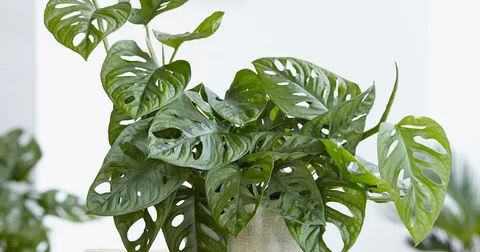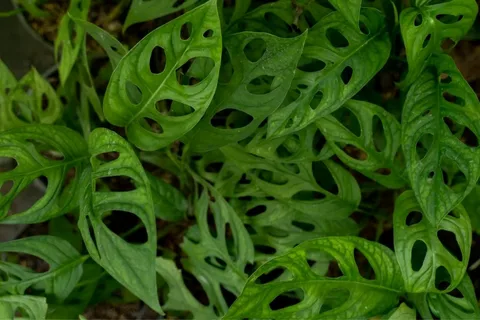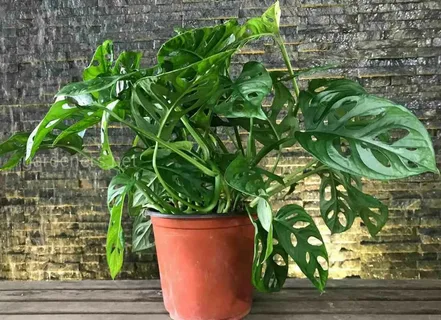Outline
- Introduction
- What makes Adansonii so well-known?
- Common questions: “Is it easy to attend to? Will it thrive indoors?”
- Why You Should Grow an Adansonii
- Aesthetic attraction and air-purifying benefits.
- Low-safety and domestic dog-great preference.
- Detailed Care Guide for Adansonii
- Light Needs: What works wonderfully indoors and exterior.
- Watering Tips: Simple sporting activities for happy plants.
- Soil and Potting: Choosing the right soil and pot for wholesome growth.
- Humidity and Temperature: Easy hints to create the right environment.
- Dealing with Common Issues
- Solutions for yellow leaves, drooping, and pests.
- Preventing root rot and inspiring healthful boom.
- Propagation: Growing Your Own Adansonii Plants
- Step-via manner-of-step guide for propagation.
- How to take care of new cuttings.
- FAQs
- Answering famous questions about Adansonii.
- Conclusion
- Key takeaways and encouragement to attempt growing an Adansonii.
Introduction: Why Choose Adansonii for Your Home?
If you’re a plant lover, you’ve likely seen Adansonii, moreover known as Monstera adansonii or the Swiss Cheese Plant, with its specific leaves entirely of natural holes.
Common questions I concentrate on are, “Is Adansonii hard to attend to? Will it develop the interior?” The answer is sure – it’s perfect for interior design, easy to attend to, and prospers with only some fundamentals. This guide will walk you through all you need to recognise to expand a healthy Adansonii.
Why You Should Grow an Adansonii

Adansonii is a favorite for plant enthusiasts for lots motives:
1. Aesthetic Appeal
Its specific, holey leaves supply it a tropical, amazing look that gives personality to any room. Whether you’re new to houseplants or experienced, Adansonii makes a declaration.
2. Air-Purifying Benefits
Like many flora, Adansonii facilitates purifying indoor air. It’s not a miracle to clear out, but it does help to smooth up your place with the resource of disposing of small pollutants.
3. Low-Maintenance and Beginner-Friendly
Adansonii is forgiving if you leave out watering properly right here and there. It’s smooth to develop and fits every beginner and skilled plant owner.
four. Safe (with Caution) for Pets
While Adansonii is considered mildly toxic, it’s usually consistent as extended because it’s out of reach of pets. If you have got a curious cat or dog, place it on a high shelf or a putting planter.
Detailed Care Guide for Adansonii
Adansonii is straightforward to attend to in case you recognize a few simple needs. Let’s undergo every one.
Light Needs
Adansonii prefers colourful, indirect mild.
- Best Indoor Placement: Near a north or east-facing window for mild, oblique mild.
- Avoid Direct Sunlight: Direct flight can burn the leaves, inflicting brown spots.
- Artificial Light: If you don’t have masses naturally mild, use an expanded mode to preserve it.
Watering Tips
Watering is top priority for a healthful Adansonii, but it’s easy to manipulate.
- How Often: Water every 7–10 days, counting on room temperature and light.
- Check the Soil: Stick your finger into the soil; if the pinnacle inch is dry, it’s time to water.
- Signs of Overwatering: Yellow leaves frequently advise an excessive amount of water. If you see yellowing, permit the soil to dry out earlier than the following watering.
Soil and Potting
Choosing the right soil and pot is important for healthy growth.
- Soil Type: Adansonii goals properly-draining soil. A mixture with peat moss, perlite, and normal potting soil works well.
- Pot Choice: Use a pot with drainage holes to permit greater water break out, preventing root rot.
- Repotting: Repot each 1–2 years or when the roots start to outgrow the pot. Spring is a splendid time to report.
Humidity and Temperature
Adansonii is a tropical plant and loves humidity.
- Humidity: Aim for mild to immoderate humidity. Mist the leaves each few days or region the pot close to a humidifier.
- Temperature Range: It does properly in commonplace room temperatures, spherical 18–27°C (sixty five–eighty°F). Avoid setting it near bloodless drafts or heating vents.
Dealing with Common Issues
Even with the first-rate care, you would likely face some troubles with Adansonii. Here are commonplace problems and brief fixes:
Yellow Leaves
If you word yellowing leaves, the plant might be getting an excessive amount of water.
- Solution: Let the soil dry out sincerely in advance rather than watering all over again. Check the pot’s drainage and avoid letting water take a seat down at the lowest.
Drooping or Wilting
Drooping leaves often suggest the plant is thirsty.
- Solution: Give it a brilliant drink and it needs to sit up inside for some hours. Keep an eye fixed constant on soil moisture to save you destiny drooping.
Pests: Spider Mites and Aphids
Pests like spider mites and aphids may be a nuisance.
- Prevention: Wipe down the leaves every so often and check for pests regularly.
- Treatment: If you are aware of pests, use a mild soapy water spray to cope with the leaves.
Root Rot
Root rot occurs at the same time as the plant sits in water for too long.
- Prevention: Always use a pot with drainage holes and keep away from overwatering.
- Fix: If rot has begun, dispose of the plant from the pot, reduce away any comfortable roots, and replant in easy soil.
Propagation: Growing Your Own Adansonii Plants
If you’d like greater Adansonii flowers, propagation is simple and worthwhile.
Step-through-Step Guide to Propagation

- Choose a Healthy Stem: Look for a stem with a few leaves and at least one node (the small bump wherein roots will expand).
- Cut Below the Node: Using clean scissors, reduce certainly underneath the node.
- Place in Water: Put the reducing in a glass of water, with the node certainly submerged.
- Watch for Roots: In about 2–4 weeks, roots have to start to appear.
- Plant in Soil: When the roots are an inch extended, plant the slicing in a small pot with soil.
Caring for New Cuttings
Once planted, cope with your new Adansonii like a person plant. Keep it in colourful, indirect light and water even as the pinnacle inch of soil feels dry.
FAQs
How much does Adansonii need?
Adansonii loves amazing, oblique slight. Place it close to a window that receives filtered light or use a broaden slightly if your home is dim.
Is Adansonii safe for pets?
Adansonii is considered mildly poisonous, so it is out of the reach of pets to be secure.
How often ought to I water my Adansonii?
Water approximately as soon as every week, but test the soil. Water is most effective at the identical time because the pinnacle feels dry.
Can I increase Adansonii outside?
Yes, however handiest in warmth, humid situations with oblique moderate. Too much sun can scorch the leaves.
How fast does Adansonii expand?
With nice light, water, and nutrients, Adansonii grows at a slight tempo. It can reap 2–3 ft indoors over time.
What’s the first-rate soil for Adansonii?
A well-draining potting blend with peat moss and perlite is right.
How do I preserve my Adansonii leaves from turning yellow?
Check your watering ordinarily. Yellow leaves frequently endorse the plant being overwatered. Make the pot have drainage holes and allow the soil to dry out among waterings.
Conclusion: Why Adansonii is a Great Choice
If you’re searching for a plant that’s easy to take care of and affords an elegant, tropical vibe in your region, Adansonii is a splendid choice.
Its holey leaves carry a completely unique attraction, and it’s now not difficult to maintain health with a few basics. Just remember to provide it obliquely, water best whilst wanted, and revel in looking at it thrive.
With a bit of care, Adansonii may be a lush, green addition to any domestic. So, whether or not you’re new to plants or a seasoned pro, deliver Adansonii a try – it’s an easy manner to liven up your area
